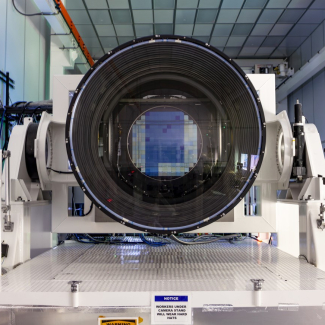
Climate model shows that Venus could never have had oceans
Whether Venus, one of the Solar System's four terrestrial planets, ever had oceans remains an unsolved puzzle. Although an American study hypothesized that it did, this is now challenged in a paper published on October 14, 2021 in Nature, involving in particular scientists from the CNRS and University of Versailles-Saint Quentin-en-Yvelines1 (UVSQ). Using a state-of-the-art climate model, the research team has come up with an alternative scenario to the American study. Shortly after its birth 4.5 billion years ago, the young Venus was covered with magma. To form oceans, the temperature of its atmosphere would have had to decrease enough for water to condense and fall as rain over a period of several thousand years, as happened on Earth. However, although the Sun at that time was 30% fainter than it is now, this would not have been sufficient to reduce the young planet's temperature to a point where oceans could form. Such a fall in temperature would only have been possible if the surface of Venus had been shielded from solar radiation by clouds. The researcher's climate model, however, showed that clouds would have preferentially formed on the night side of Venus, where they couldn't shield the surface from sunlight since that side receives none. On the contrary, instead of acting as a shield, the clouds helped maintain high temperatures by causing a greenhouse effect that trapped heat in the planet's dense atmosphere. According to this climate model, the high surface temperatures prevented any rainfall, and, as a result, the oceans were never able to form. Data collected by future space missions2 to Venus should make it possible to test these theoretical results.

© Manchu
- 1in France, researchers from the Laboratoire d’astrophysique de Bordeaux (CNRS / University of Bordeaux) and the Laboratoire « atmosphère et observations spatiales » (IPSL, CNRS / University Versailles St Quentin / Sorbonne University) took part in this work. The study was led by the University of Geneva, Switzerland
- 2the goal of the Envision mission planned for 2030 as well as the Davinci and Veritas missions scheduled for 2029 is to study Venus
Day–night cloud asymmetry prevents early oceans on Venus but not on Earth. Martin Turbet, Emeline Bolmont, Guillaume Chaverot, David Ehrenreich, Jérémy Leconte and Emmanuel Marcq. Nature, 14 October 2021. DOI : https://doi.org/10.1038/s41586-021-03873-w


